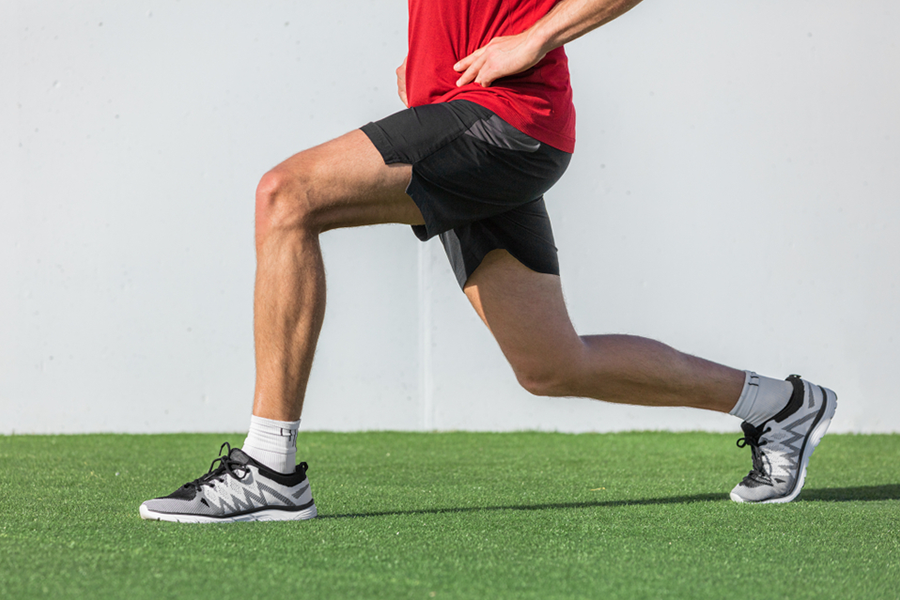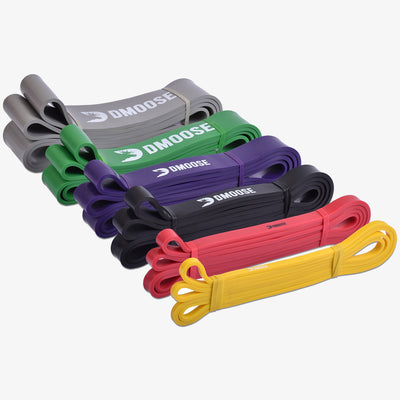The glutes are the unsung heroes of the lower body, silently carrying out most of our movements with power and grace. Like a sturdy foundation to a grand building, they provide the necessary support and stability to our bodies, keeping us upright and balanced.
But let's be real; their benefits go beyond just functionality. A well-sculpted set of glutes can transform a man's physique, making him look more commanding and masculine. A perfectly chiseled butt is like a work of art, a masterpiece that demands attention and admiration.
Despite their importance, most men fail to train them properly, primarily because they don't know how to do so. Well, your quest for the perfect derriere ends here. This expert guide will give you all the information you need to perform the best glute workout for men.
Keep reading to learn about the different workouts you can do and the equipment you will need to get started.
Why Train Your Glutes?
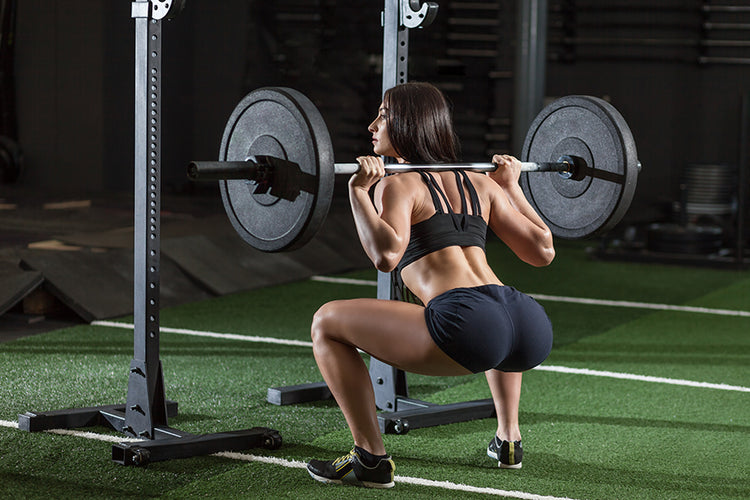
Let's face it most women have better-looking butts than most men. But why is that? Well, one reason is that many women spend a lot of time and effort working on their glutes, while most men don't give them much thought.
Also, when most people think of training their glutes, they probably think of wanting to improve their appearance. And while there's nothing wrong with that, there are some very important reasons to focus on your glutes beyond just looks.
It can help increase your explosive power and speed, making it an essential part of any athlete's workout regimen. The gluteus maximus, medius, and minimus are the largest muscles in the body, and as such, they play a crucial role in stabilizing the pelvis and hips. For one thing, they are essential for proper posture and alignment.
You're more likely to experience pain in your lower back and hips if they are weak. Additionally, these muscles help you move more efficiently and prevent injuries. When you walk, run, or jump, your glutes are the largest muscles responsible for generating power.
So if they're weak, you'll tire out more efficiently and be at greater risk for injuries like pulled muscles or strains. Simply put, there are multiple good reasons to focus on training your glutes - not just because you want a better butt!
Related Article: Strong Glutes - 8-Week Booty Burner Workout
How Do Glute Exercises Work?
Glute exercises are all the rage nowadays, but how do they work? The answer has to do with the anatomy of the glutes. The gluteus maximus is in charge of hip extension.
The gluteus medius and minimus are smaller muscles that attach to the pelvis and help with hip extension. When you do a glute exercise, you're activating all of these muscles to some degree. There are a few different methods to activate the glutes.
One is doing an exercise extending your hips, such as a lunge or a squat, and another is, doing an exercise targeting the glutes specifically, such as a donkey kick or a fire hydrant. And finally, you can activate the glutes by doing any cardio exercise, such as running or biking.
So if you want to get a bigger butt or just want to ensure your glutes are firing properly during workouts, add some glute exercises to your routine!
Glute Workout: 8 Exercises to Strengthen Your Glutes

There's no question that having a strong back is essential for functional fitness and aesthetics. But with so many different glute exercises, it can be tough to know where to start.
Here are 8 exercises that will strengthen your glutes, whether you're just getting started or a seasoned pro.
1. Single Leg Hip Thrust

There's no doubt about it the single-leg hip thrust is a critical exercise. It helps improve your balance and stability because you're essentially working one leg at a time, which forces your body to stay steady and controlled.
In addition, it is excellent for strengthening your muscles and improving your range of motion. By working through a full range of motion, you will improve your strength and flexibility.
Finally, this exercise is excellent for developing power; by explosively pushing through your hips, you will develop the ability to produce force quickly and efficiently, which is essential for any athlete.
How to:
- Put your shoulder blades at the edge of a bench or couch as you lean against it.
- Keep your head, neck, spine, and torso in alignment while you do this technique by using the hinge movement.
- Raise one foot off the ground slightly. As you straighten your body by lifting your hips, raise that leg so that your thigh is perpendicular to your torso and your shin is parallel to the floor with your knee bent.
- Wait until the set is finished before returning your lifted foot to the ground and pausing at the bottom.
2. Dumbbell Lunge
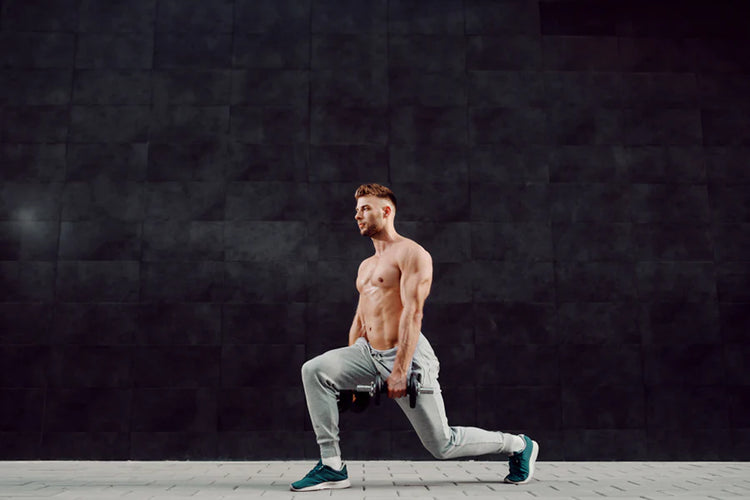
Lunges are a great way to work your lower body, but did you know there's more than one way to do them? Dumbbell lunges are a variation of the traditional lunge that can offer several benefits.
For one thing, holding dumbbells in each hand helps improve your balance. Additionally, the added weight helps build muscle and increase bone density.
These lunges target your glutes and thighs more effectively than traditional lunges. So if you're looking for a new challenge, give them a try!
Steps:
- Hold the dumbbell and position it just below shoulder height.
- Take the weight from the rack by grabbing it with a wide grip.
- Step backward, hinge your hips backward, and squat down.
- Come back up once you can feel your thighs parallel to the floor.
- Go for one more rep while keeping your knees bent.
Related Article: Overhead Lunge: The 8 Best Variations for Full Body Sculpting & Strength
3. 45-Degree Hyperextension
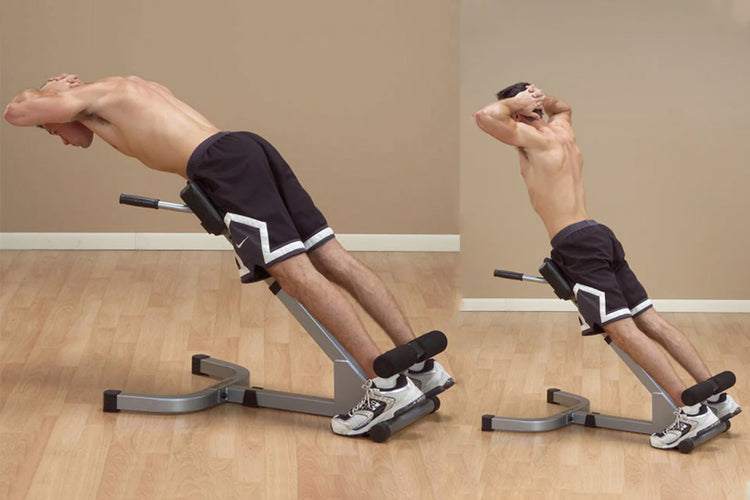
The 45 degree hyperextension is a movement that should be a part of everyone's workout routine. While some people may view it as optional, it's actually quite crucial for several reasons.
45-degree hyperextension helps strengthen the lower back because the lower back supports the spine, and stronger muscles can help prevent injuries such as herniated discs.
It also helps improve flexibility in the hamstrings and glutes, leading to better performance in activities such as running and jumping.
Finally, 45-degree hyperextension can increase blood flow to the spinal cord and brain, which helps boost cognitive function and lessen the risk of stroke.
There are 2 techniques to perform this. The first technique works the hamstrings, glutes, and erector muscles, which maintain neutral feet and a neutral spine.
However, if you want to favor the glutes and experience engagement, you can execute the exercise with wide feet and a rounded spine, which separates the erector muscles. Although it may appear counterintuitive and risky, this motion is safe.
Steps:
- Place your body on the hyperextension machine with your thighs positioned so the pads are just below your hips, and you have free hinging movement.
- With your elbows tucked in, hold the dumbbell of your choice in front of your chest with both hands.
- Keep your feet straight, chest and neck straight, and shoulders pulled back when adopting the neutral-neutral technique. Become more prone by hunching your hips.
- Pull yourself up, squeezing your glutes until your body is straight while maintaining a straight back and pausing briefly.
- Lower back down and repeat as desired.
4. Barbell Hip Thrust
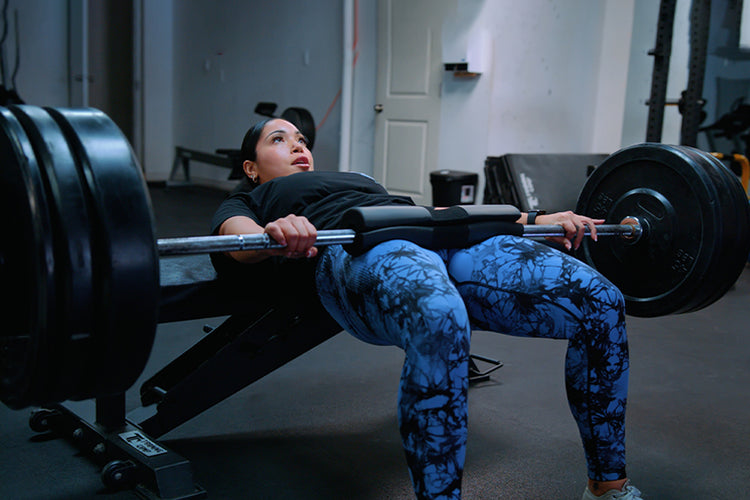
The gluteus maximus is the most powerful muscle in the body, so it's no surprise that exercises that target this area can be beneficial for overall strength and power, and barbell hip thrust is one such exercise.
The hip thrust involves placing a barbell across the hips and then thrusting the hips upwards, using the glutes to drive the movement. It can be performed with either one or two hands on the barbell, and it can be done with legs extended or bent at the knees.
The main benefits of hip thrust are increased gluteal size and strength, improved hip mobility, and increased core stability.
How to:
- Begin by positioning yourself near a flat bench, with your upper back pressed against the long edge of the bench. Your feet should be flat on the ground, hip-width apart, and your knees bent.
- Roll a loaded barbell over your legs so it's directly above your hips. If you're new to this exercise, you might want to start with a lower weight until you're comfortable with the movement.
- Reach down and grab the barbell with an overhand grip, hands slightly wider than shoulder-width apart. Ensure the bar is balanced and centered over your hips.
- Push through your heels and lift your hips, raising the barbell as you do so. Continue to lift until your hips are in line with your body. Be sure to keep your knees in line with your toes and do not over-extend your back at the top.
- Lower your hips back to the ground, controlling the movement of the barbell as you do so.
- Perform the desired number of repetitions.
5. Deficit Reverse Lunge
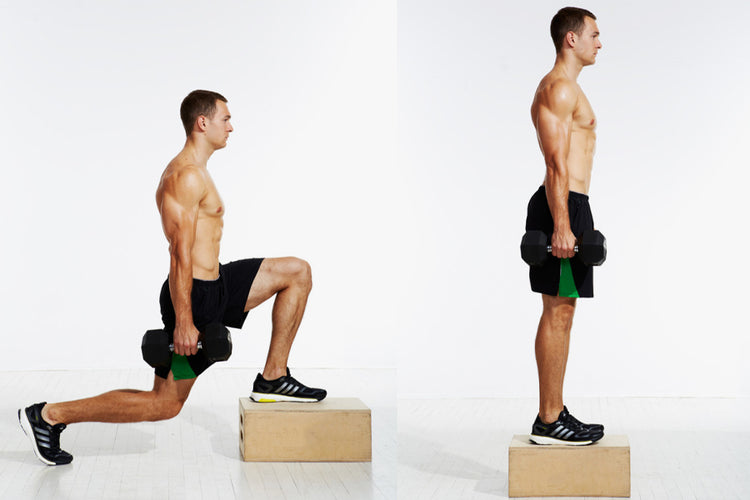
The deficit reverse lunge is a great way to build strength and power in your lower body. Unlike the regular reverse lunge, the deficit version forces you to step back further, which increases the range of motion and challenges your balance.
In addition, the added height of the platform will also force your quads to work harder. And because you're stepping back instead of forward, you will also get a great stretch in your hip flexors.
So if you're searching for a way to take your leg workouts to the next level, try the deficit reverse lunge.
Steps:
- Holding the dumbbell in each hand, stand on a step or platform.
- Step back with one foot and lower yourself into a lunge while maintaining the alignment of the front of your knee with the front of your toes.
- Maintain the walking lunge form, which includes a 20-degree torso tilt and a back leg that nearly touches the floor.
- Putting pressure through your heels, bring the back foot back to the step.
- Repeat, switching feet each time.
Related Article: How to Do Walking Lunges: Proper Form, Variations & Benefits
6. Glute Ham Developer (GHD)
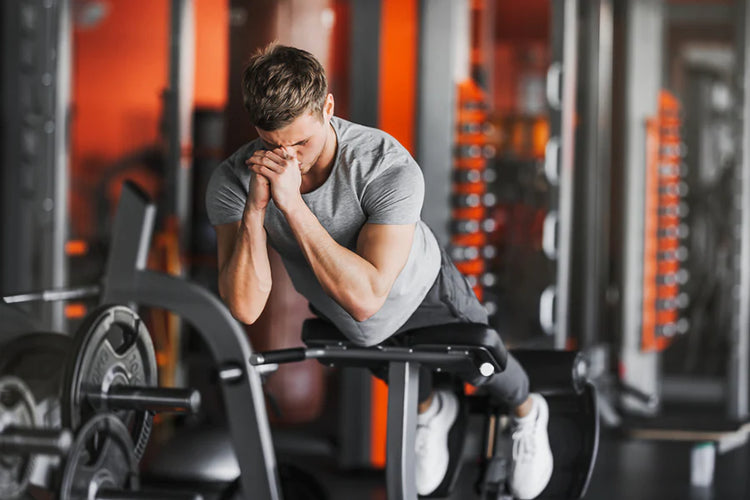
Like most people, you probably don't spend much time thinking about your lower back. But the fact is, your lower back is essential for everything from standing up straight to lifting heavy objects.
That's why it's necessary to keep it strong and healthy. And one of the best ways to do that is with glute ham developer (GHD) exercises.
Glute ham developer (GHD) strengthens the muscles and connective tissues in your lower back, which helps prevent injuries and relieves the pain if you're already experiencing back problems.
Furthermore, strong lower back muscles can improve your posture and help you maintain a healthy spine. In other words, glute ham developers (GHD) are essential to any fitness routine. So if you're not already doing them, it's time to start!
Steps:
- Position your body such that your torso rests face-down on a flat workout bench and your hips are slightly off the edge to allow for a full range of motion. You will be bending your knees.
- Squeeze your glutes as you lift and stretch your legs until your body is straight from head to toe.
- Hold onto the bench tightly. Either maintain a straight leg position or utilize the spread eagle technique by spreading your legs apart as you elevate them.
- Repeat by cautiously descending once more.
7. Seated Banded Hip Abduction
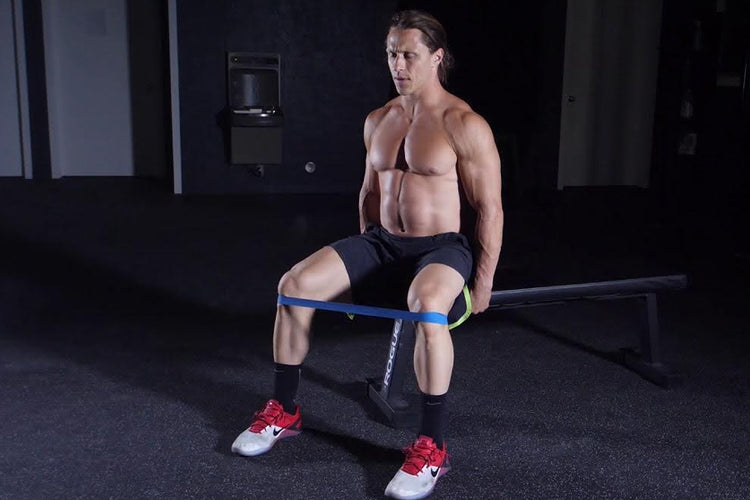
Seated banded hip abduction is a great way to work out your glutes. The bands provide resistance as you move your legs out to the side, and the seated position helps stabilize your body so that you can focus on your glutes.
The critical difference between seated banded hip abduction and regular hip abduction is that the former provides resistance in both directions. In contrast, the latter only provides resistance when moving your legs to the side.
It makes seated banded hip abduction a more effective workout for your glutes and makes it less likely that you will accidentally smack yourself in the face with a band. So if you're looking for a great way to work your glutes, it is the way to go.
Steps:
- Place your feet flat on the floor while you sit on the end of a bench or chair.
- Wrap a tiny band around your knees at the bottom of your thighs.
- Next, extend your knees while working your upper glutes.
- For the first 10 to 15 repetitions, keep your back straight.
- Lean slightly forward for the next 10 to 15 repetitions.
- And for the final 10 to 15 repetitions, lean slightly back while bracing your hands.
Related Article: Hip Circle Bands: The Coolest Way to Get Glutes You Have Always Dreamed of
8. Side Lying Hip Raise
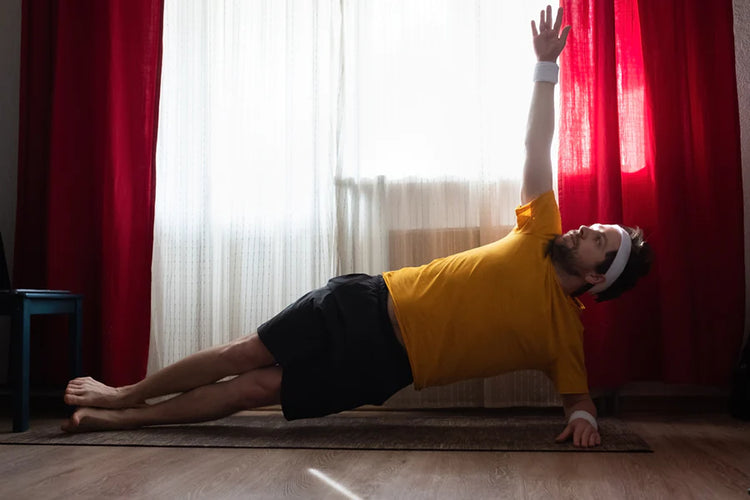
The side-lying hip raise is essential for anyone looking to improve their strength and stability. This exercise targets the muscles along the sides of the hip, including the gluteus medius and gluteus minimus, which are responsible for keeping the hip joint stable, and help control movement in the lower body.
This exercise helps strengthen these muscles, improving overall balance and stability. Additionally, this exercise can also help prevent injuries by strengthening the muscles that support the hip joint.
For all these reasons, the side-lying hip raise is essential to any strength-training routine.
How to:
- Start in a side plank position, putting all your weight on one elbow, with your hips slightly bent and slightly back from where your elbow is. Additionally, you must be on the floor with your knees piled atop the other. They must be almost 90 degrees bent and level with your elbow.
- Maintain a gentle resting position on your hip's upper arm to prevent unwanted flapping.
- To widen the hips as much as possible, push up through your grounded knee and ankle, forcing the hips forward, contracting the glutes, and lifting the upper leg. On both legs, you want as much abduction as possible.
- With this movement, your lower leg will rotate, and your torso and hips should mostly straighten. The gluteus medius will be the muscle you feel the most during the lockout.
- Bring your hips back to where they were when you first started. Repeat as desired.
FAQs
1. How can I get a bigger bum fast?
There is no one definitive way to get a bigger bum quickly. However, some methods that may be effective include: performing glute exercises regularly, like squats and lunges and eating a healthy diet with lots of protein.
2. What exercises strengthen the glutes?
Many exercises can help strengthen the glutes. These exercises include squats, lunges, hip thrusts, hyperextensions, and bridge exercises.
Final Verdict
The glutes are an important muscle group for men, and they should be worked on regularly to maintain strength and functionality. This guide provides an excellent overview of the best glute exercises for men, and with a bit of practice, anyone can achieve great results.
Remember building a great set of glutes takes time and consistency. Incorporating the exercises mentioned in this guide into your workout routine will certainly help.
Adequate sleep, rest days, and regular stretching can help your muscles recover and grow stronger. It's also worth noting that the benefits of working your glutes go beyond aesthetics. So, what are you waiting for? Try these exercises today!





